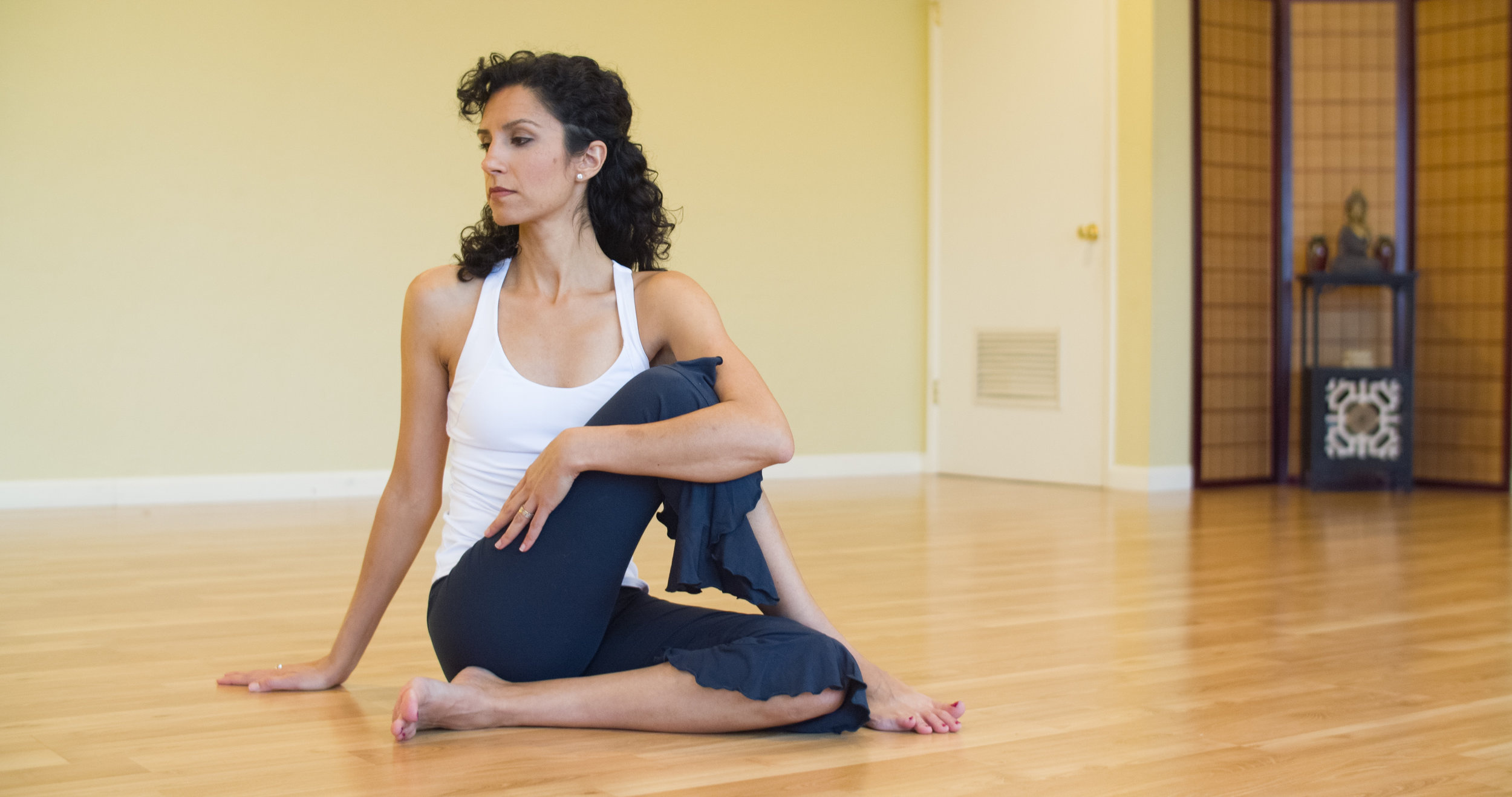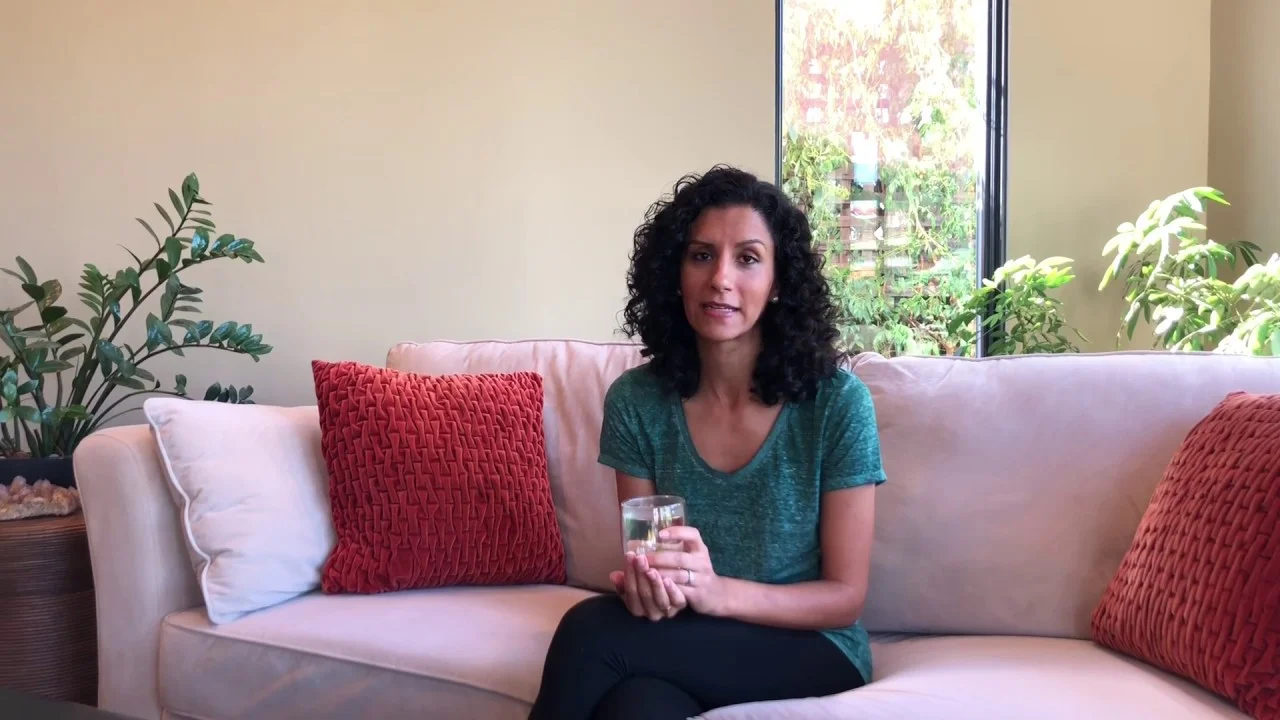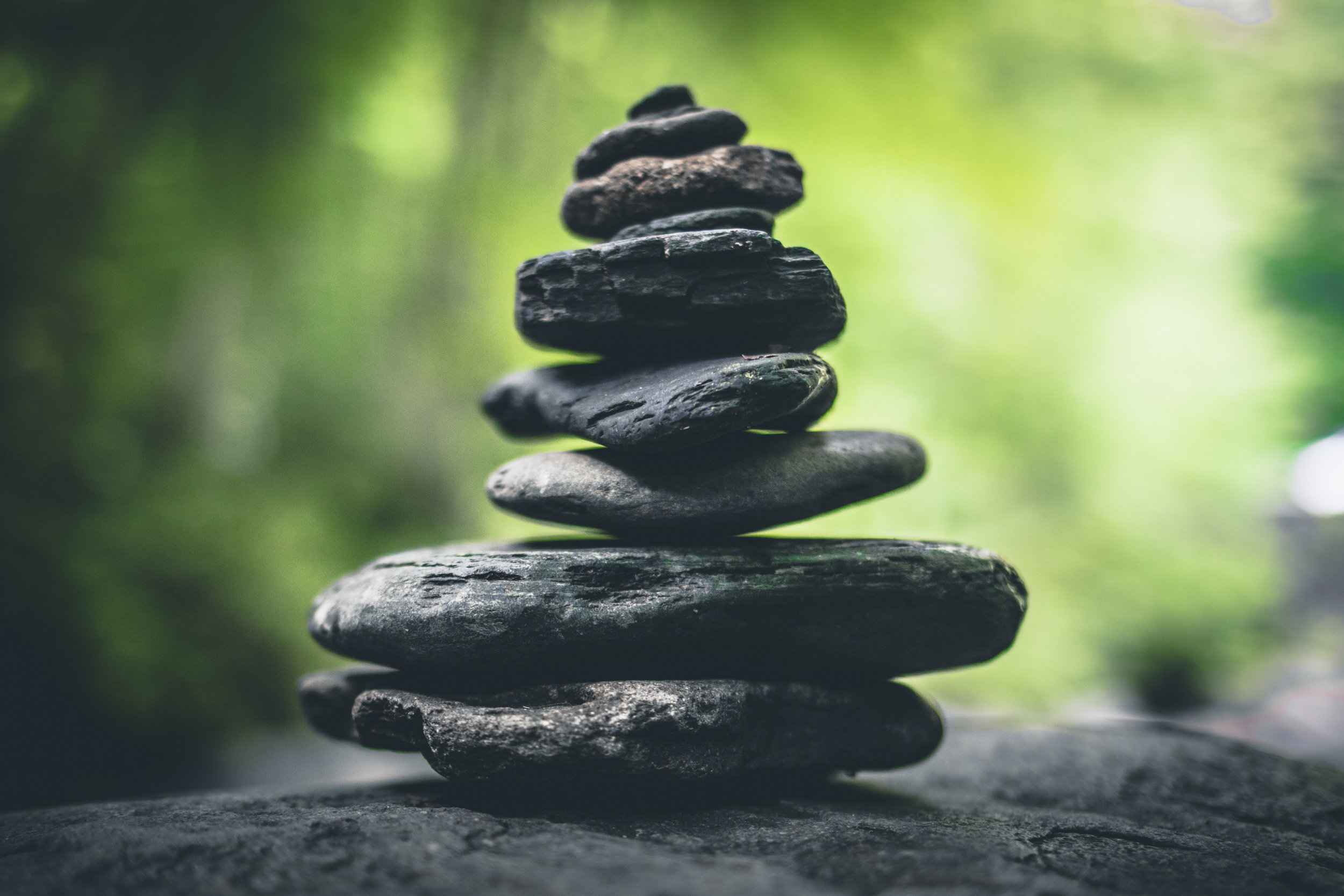by Salvador Cefalu, M.S., L.Ac.
The Yin & Yang of Movement
As the basis of Chinese Medicine, the concepts of Yin and Yang are depicted as the dark and light divisions of a Tai Ji circle.
Yin and Yang are two parts of the whole. Yin is the dark, solid part relating to form and Yang is the white part depicting space and relating to function.
Philosophically, there is no separation of Yin and Yang in the living world as there is always Yang within Yin and Yin within Yang as can be seen in the tiniest atomic particle (Yin) which contains a tremendous amount of energy and power (Yang).
In this view, our body’s structure (the form) is seen as Yin, while the body’s function is Yang.
Qi, often translated as energy, is an aspect of Yang, and relates to function and movement. When there is proper Qi flow in the body, there is a normalization of movement within the body including the normal flow of Yin circulation which includes all the fluid substances.
The Yin energy is associated with the Water Path and the anterior aspect of the body and the Yang energy is associated with the Fire Path and posterior aspect. Learning to work with breath and visualization can help you to harmonize these energies to optimize your health and well-being.
The Fire & Water Paths
The Fire and Water Paths are two energy channels that run along the center of the body’s torso and make up the Microcosmic Orbit.
The Water Path is also called Ren Mai, or Conception Vessel, and relates to the Yin aspect of the body. Ren Mai is also called the Sea of Yin and the Vessel of Bonding because it provides the nourishing and nurturing energy for your life.
The Water Path begins behind the genitals and ascends along the midline of the front or anterior of the torso and terminates on the face at the chin. Specifically, at the hollow area of your chin.
The Fire Path is also called Du Mai, or Governing Vessel, as it is the path that governs the Yang Qi to help generate warmth and provide the vitality for all aspects of function within the body.
Du Mai is also referred to as the Sea of Yang Qi and the Vessel of Individuality because it provides the energetic impetus to separate and branch off on your own in life.
The Fire Path runs upward within the spine from the base of the coccyx into the mouth. Specifically terminating at the junction between the gum and the superior labial frenulum (the thin tissue connecting your upper lip to your upper gums just above your front teeth).
Both of these energetic channels circulate upward, however, in the classics, these channels are described as one continuous circulation.
In Daoist practices, the connection of these channels is made when you touch your tongue against the roof of your mouth which is an essential part of doing the Microcosmic and Macrocosmic Orbit Meditations to facilitate the circulation of these Yin and Yang energies through breath and visualization. This practice provides enormous health benefits for your mind and body.
You can learn how to begin cultivating this practice through a guided introduction with Dr. Setareh Moafi by clicking the button below.
The Importance of Harmonizing the Water Path
The purpose of focusing on circulating the Water Path is to move and clear stagnation of Yin fluids. Health conditions related to the stasis of Yin fluids range from simple fluid accumulation such as edema to the hardening of Yin into Phlegm which can manifest as cysts or fibroids in women or swollen prostate in men. Any type of tumor is considered to be a Yin pathology that has condensed into Phlegm and blood congestion of the cardio-vascular system is also a form of Yin stagnation.
Working with the Water Path is therefore a powerful way to allow you to directly improve the circulation of fluids in your body to reduce the stagnation of Yin which generate these pathological conditions.
When cultivating the activation of the Water Path the focus is first to descend energy down the back along the spinal column – this helps consolidate Yang Qi into the Kidneys during inhalation. After energy gets drawn downward into the pelvic floor, the exhalation sends the energy upward along the Sea of Yin or Ren Mai. This activation of Ren Mai helps move the Water energy to reduce fluid stagnation in the system.
Circulating energy into the Kidneys with inhalation also boosts the strength and power of the adrenal glands as Qi is drawn into an important area called the Ming Men or “Life Gate Fire” to bring warmth and vitality into the body.
The Importance of Harmonizing the Fire Path
The purpose of circulating the Fire Path is to release stagnation of Yang Qi that can manifest as chronic sympathetic nervous system stress, which can lead to hyperactivity and excessive heat within the body. Conditions such as headaches, neck and back stiffness and pain, hypertension, nervousness and anxiety, dizziness and vertigo, and, in severe cases, even strokes and seizures are related to an over-active Fire path.
Working with the Fire Path is therefore a powerful way to release pent up stress and free stagnant energy to liberate your vitality which will help you move more freely and efficiently.
Releasing the Fire Path helps you feel lighter in body and mind and more effectively release your internal power.
For the Yang or Fire Path, the circulation is first drawn down the front (Yin) side of the body to gather energy into the Kidneys and then from the pelvic floor it moves up the back (Yang) side of the body along the spine, or Du Mai.
The idea is to first gather Water energy into the an important energy center called the Dan Tian, located in your lower abdomen below the navel. This energy center is also known as the Elixir Field where energy is stored and consolidated. The energy that you gather in your Dan Tian becomes the fuel that transforms into Kidney Qi which then ascends up the spine and out the limbs during exhalation to facilitate the initiation of function throughout the body. Activating the Fire Path also initiates physical movement so you can extend yourself into the world with self-confidence and vitality.
With this said, working with the Water Path helps you release the Yin and fluid system of the body and working with the Fire Path helps you release and activate your Yang Qi. It is important for each of these pathways to be moving freely and harmoniously for optimal health and well-being. If the Water Path is not moving freely, then fluid stasis develops and the body becomes cold, hypoactive and lethargic. If the Fire Path is not moving freely, then Qi can stagnate and the body can become overheated and hyperactive.
The Fire & Water Paths Relationship to Your Nervous System
The Fire and Water Paths correspond with the action of the sympathetic and parasympathetic nervous systems.
The sympathetic system is our ‘fight or flight’ response. Once we’re able to relax enough to enjoy a meal, then the parasympathetic system kicks in to activate the digestive organs.
With the fast paced lifestyle of the modern world, the Fire Path becomes overactive, and this leads to burnout, anxiety, nervousness, and ultimately accelerated aging. Furthermore, Fire energy is stimulated with through the overuse of the eyes. In Chinese Medicine, we say staring overstimulates Fire so as you can imagine with the issue of screen addiction so prevalent in today’s world whether it’s staring at the television, the computer or the cellphone screen, the Fire energy is overactive for many individuals.
This is why the Fire type person will tend to be ‘sympathetic dominant’ and can quickly move into a ‘fight or flight’ stress response. For this type of person, many use exercise to help them release their Fire Path and release their nervous stress, but this often doesn’t lead to a resolution of the stress response pattern and just blows off a little steam. Furthermore, with the practice of weightlifting and running on the treadmill, energy becomes very stagnated in the body and a lot of heat is generated which will create more and more anxiousness and nervousness.
It is not uncommon for very active individuals, such as athletes, to suffer from anxiety types of disorders because they are not properly cooling the body down through harmonizing the circulation of Qi and fluids.
So although it may seem logical to release the Fire Path for the hyper-active personality, since so many people are already over-stimulated, I suggest taking some time focusing on the Water Path throughout the day with your breathing to anchor the Qi, calm the mind and relax the abdominal tension.
Working with the Fire Path breathing is excellent for activities such as running and jumping as it supports the release of power through the limbs and for the body to feel lighter. But remember, with the predominance of Type A lifestyles, the Fire Path is already over-activated and this leads to the stress response with elevated cortisol levels.
With this said, the Water Path will therefore be best utilized in these cases as well to allow a person to ground their energy and calm the nervous system. In addition, in Chinese Medicine we describe the action of the Water Path breathing as anchoring the Yang Qi into the Kidneys and this allows for the recuperation of the adrenal glands that are over-active from high states of stress.
Interestingly, working with the Water Path is also beneficial for the more easy-going, ‘couch potato’ type individuals who often struggle with weight issues and tend to be ‘parasympathetic dominant.’ These types of people tend to suffer with conditions related to hypo-functioning metabolism and therefore tend to feel sluggish and are less active. They also have more of a propensity to depression.
In a ‘parasympathetic dominant’ person, the Water path easily becomes bogged down with fluid accumulation, so the energy of the Water Path needs to be released to improve this condition. That’s why the Water Path circulation draws energy into the Kidneys to warm the Ming Men Fire and stimulate the metabolism. The Water Path breathing therefore allows for the adrenals to strengthen which will support the creation of energy for them to naturally stimulate their Fire Path and become more physically active.
By cultivating the Microcosmic and Macrocosmic Orbit Meditations, you can learn to circulate energy along the Fire and Water Paths to balance your nervous system and reduce both fatigue as well as anxiety. Traditionally, men are encouraged to do the Fire Path and women do the Water Path in the Microcosmic breathing. However, what I am suggesting is that in today’s modern world of high stress and hyper-activity, you may find working with the Water Path helps to calm your nervous system and settle your spirit better than the Fire Path.
If you are a hypo-active person, I am again suggesting working with Water Path which will help you slowly build up your energy so you will naturally want to be more active and release your Fire Path with everyday activities such as house cleaning, gardening and exercise.
Cultivating the Microcosmic & Macrocosmic Orbits to Facilitate Circulation Along the Fire & Water Paths
Learning to properly circulate energy along the Fire and Water Paths by way of the Microcosmic and Macrocosmic Orbit Meditations will improve your focus, calm your mind and heighten your intuitive and psychic powers. Keeping energy properly circulating through these pathways can also help resolve both acute and chronic health issues.
The Microcosmic Orbit circulates energy through the front (Ren Meridian) and back (Du Meridian) to open the seven chakras, free congestion in the meridians, and unify Yin and Yang.
The Macrocosmic Orbit is a more advanced meditation technique that pumps energy from the pelvis into the lower limbs, improving blood, Qi, and fluid circulation throughout all of the internal systems of the body.
Begin by learning then practicing the Microcosmic Orbit Meditation until you experience movement (visual or somatic) along the front and back sides of your upper body. Once you’ve reached a level of comfort with this practice, you can transition to the Macrocosmic Orbit Meditation for a more advanced cultivation.
The guided meditations are available for you to start practicing now as a tool with which to empty your mind, release physical tension from your body, and find true stillness and presence through communion with the Divine.
Please note: releasing the Fire or Water Path through focused breathing should be avoided during acute crises such as anxiety or a panic attack so as not to exacerbate the condition.
Salvador Cefalu, M.S., L.Ac. is the Founder and Co-Director of A Center for Natural Healing in Santa Clara, California, a wellness clinic that specializes in Classical Chinese Medicine & Japanese Meridian Therapy, a rare non-insertion form of Acupuncture. Salvador is also the co-host of The Natural Healing Podcast with his wife and partner, Dr. Setareh Moafi.


















